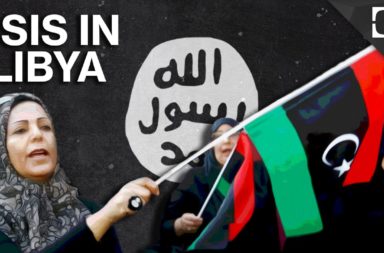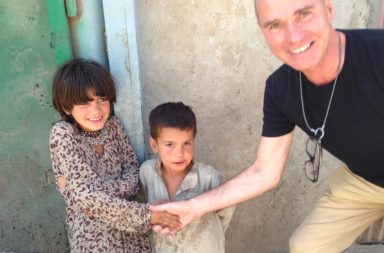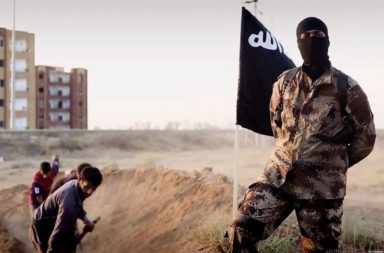The various military coalitions fighting ISIS want 2016 to be the beginning of the end for the black-clad radical Islamists, so they’re launching major assaults across Iraq and Syria.
But they’re already seeing how hard it will be to dislodge an organization that is so thoroughly embedded with civilian populations in areas under its control. Additionally, there are major questions about what happens to some ISIS-held areas after they are reclaimed and tensions within the alliances, which already feature some strange bedfellows.
And the bottom line is that ISIS has already spread to new areas, so gains by the allied forces will do little to contain ISIS’ overall territorial spread.
Here are the basics to get started.
- The biggest assault is going on in Fallujah, just 50 km west of Baghdad.
- A force of Iraqi, Iranian, and Western air support (led by the US) is inching its way to the city center but is currently stalled in the outskirts to give some 50,000 civilians time to flee through a designated exit route
- To the north, Kurdish and Iraqi national forces are pushing their way toward Mosul, which is ISIS’ Iraqi capital and the second-largest city in the country
- But, as you may have expected, there’s tension between the two forces
- On the Syrian side, a mix of Syrian Arabs, Syrian Kurds, and a U.S.-led coalition providing air support is trying to cut off ISIS’ access to the Turkish border – a point of great strategic importance – and eventually push to Raqqa, ISIS’ Syrian capital
Now to Fallujah. It’s the second-largest Iraqi city still under ISIS control, and with its proximity to Baghdad it’s a major priority of the Iraqi government, led by Prime Minister Haider al-Abadi. Fallujah is also likely an important staging ground for suicide bombings in the capital, so Abadi is under political pressure to act. It is apparently less of a priority for the U.S. government, though. “You do not need Fallujah in order to get Mosul,” a spokesman for US-coalition leader Colonel Steve Warren told Reuters.
In addition to Iraqi army, police, and Shiite militiamen, there are U.S. and Iranian support forces, and it’s the Iranians who are leading the coalition.
U.S forces worry about losing legitimacy in the eyes of the Sunni civilians trapped in Fallujah, given distrust for Shiite Iran. Those civilians, an estimated 50,000 or so, are the main reason that the coalition is still on the outskirts, delaying to give time for humanitarian organizations to help clear them out.
If the coalition were to launch its full assault prematurely thousands could be put at risk, activists fear.
That means the coalition there largely finds itself in a holding pattern, awaiting a chance to press forward.
To the north is another group of anti-ISIS fighters that distrust each other. The Kurdish Peshmerga – as the army of the largely autonomous region are called – are reclaiming villages on their way to Mosul, along with Iraqi national forces and U.S. support through things like airstrikes called in by on-the-ground advisors.
The coalition is steadily gaining ground, but it remains about 75 miles southeast of Mosul, according to news sources such as the Guardian.
When they do finally reach Mosul, they’ll face similar problems with embedded civilian populations that are going on in Fallujah, but a more immediate problem is animosity between Iraqi and Kurdish forces. Iraqi national forces worry the Kurds are motivated by the opportunity to enlarge the territorial scope of what is known as Kurdistan or as leverage to officially cut itself off from Baghdad.
Kurds, in turn, doubt the capacity of their Iraqi partners, calling them ill-trained.
But they’re still getting things done. Kurdish and Iraqi forces just retook the Mosul Dam, an important piece of infrastructure, and the Iraqi government has announced an operation to next retake the town of Tikrit.
Across the border, Syrian Kurds and Syrian Arabs are retaking key villages along the Turkish border ahead of an inward push to Raqqa, ISIS’ Syrian capital. Both are backed by about 300 U.S. special operations forces.
At this point, only about 80 km of border remain in ISIS’ control, according to Reuters. Cutting ISIS off from Turkey is key because it removes access to Europe, bolstering anti-terror efforts.
As in the other fronts, there is some major suspicious among coalition members. Arabs don’t want reclaimed places to fall under Kurdish control, so U.S. officials are taking pains to emphasize that Kurds will not occupy the lands after fighting ceases.
But keep in mind even as these forces make gains, ISIS has expanded operations to North Africa, including parts of Algeria and Libya, all the way to Afghanistan. The question is how reliant these far-flung operations are on the capitals, where, make no mistake, there is progress.





